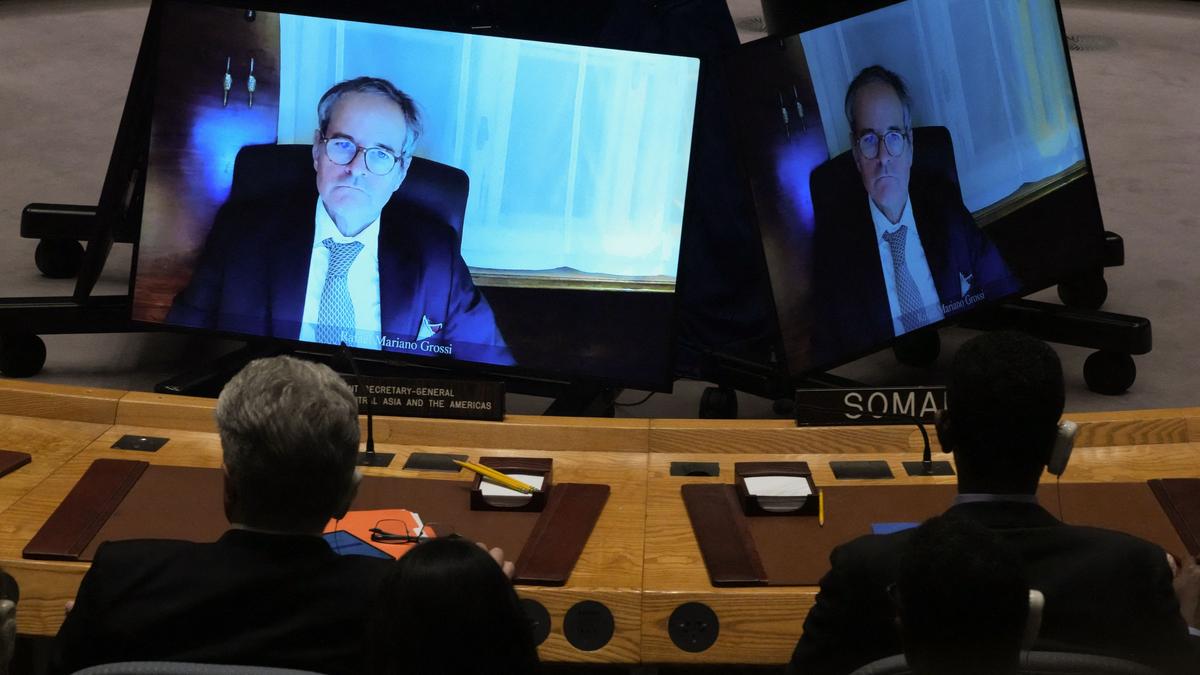International Atomic Energy Agency (IAEA) chief Rafael Grossi looks on remotely during a United Nations Security Council emergency meeting in New York on June 22, 2025, one day after U.S. strikes on Iranian nuclear facilities.
| Photo Credit: AFP
IAEA chief Rafael Grossi told an emergency meeting of the UN Security Council on Sunday (June 22, 2025) that the U.S. attacks on three Iranian nuclear sites threaten a widening of the Israel-Iran conflict but also offer a return to diplomacy.
“If that window closes, violence and destruction could reach unthinkable levels, and the global nonproliferation regime as we know it could crumble and fall,” the International Atomic Energy Agency Director General said.
Mr. Grossi urged a return to diplomacy, and for Iran to allow IAEA inspectors to go back to its nuclear sites to account, most importantly, for the 4,400 kg of uranium enriched to 60%.
He said IAEA inspectors are in Iran but need a cessation of hostilities to go to nuclear sites, assess damage, and protect nuclear materials and equipment. Mr. Grossi told the emergency meeting called by Iran that craters are visible at the Fordo site, indicating the U.S. use of ground penetrating munitions, but the underground damage cannot be assessed yet.
At the Isfahan site, he said, additional buildings were hit, some related to converting uranium, and “entrances to tunnels used for the storage of enriched material appear to have been hit.” At the Natanz nuclear enrichment site, Mr. Grossi said the fuel enrichment plant has been hit again.
“At this time, no one, including the IAEA, is in a position to assess the underground damage at Fordo,” he said.
UN Assistant Secretary-General Miroslav Jenca told the council that Iranian state media reported that the three sites had been evacuated and the highly enriched uranium stockpile was transferred in advance of the U.S. strikes.
Published – June 23, 2025 07:59 am IST
